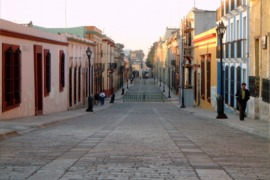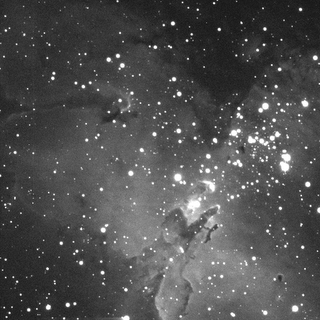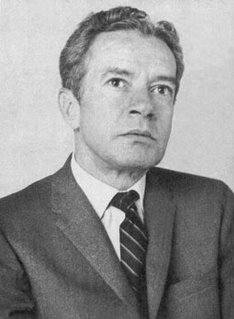Rahsaan Roland Kirk (1936-1977) was an amazing musician. He could play two saxophones at once, each playing a different tune. Asked to explain what this was like, Kirk responded (I'm paraphrasing), "One side of your brain says, 'Oh Blah Dee,' and the other says, 'What does he mean?'" The two tunes always fit together in surprising ways.
You can have the same experience. So first, for the right side of your brain, we have Oaxaca.

According to today's
Houston Chronicle:
Clashes erupt in Oaxaca between protesters, police
By REBECA ROMERO
Associated Press
OAXACA, Mexico — Masked protesters armed with sticks, rocks, fireworks and homemade gasoline bombs clashed briefly with federal police and took over a downtown hotel today in the latest violence to erupt in more than five months of demonstrations seeking the governor's resignation.
The protesters led a march commemorating today's Mexican Revolution holiday to the city's main central plaza, the Zocalo, which police took over in late October in an attempt to end the protesters' siege of the city. As they passed, the demonstrators began using their weapons against police, who fired back with tear gas and pepper spray, eventually dispersing them.
The demonstrators were seen taking vehicles away from motorists driving through the center at the time, including a passenger bus, which they later set on fire. They also took over the Camino Real hotel, breaking the windows of the upscale establishment and spraying its walls with graffiti.
The hotel closed its doors shortly thereafter and did not release any information about its guest list. It was the second time since the protests began in late May that protesters have attacked the hotel.
In late September, about 300 demonstrators armed with machetes, knives and pipes descended on the hotel searching for Gov. Ulises Ruiz, whom they accuse of rigging the 2004 election to win office and violently repressing dissent.
Protest leader Cesar Mateos said police detained some of the demonstrators, but couldn't say how many. Police did not release any information on detentions.
In Mexico's southernmost state of Chiapas today, thousands of Indian sympathizers of the Zapatista rebels blocked highways throughout the state in support of the Oaxacan protesters.
Chances are pretty good that you didn't hear this story on the radio or television today. You might have found it in your newspaper, but it wasn't in mine. Apparently, the struggle in Oaxaca continues and in the main US media we're ignoring it and so you probably don't know about it (if you're in the US and not in
Mexico).
So hold Oaxaca on the right side of your brain, and put this item on the left:

Over the weekend, on November 19, about 20,000 demonstrators were in Fort Benning , Georgia, protesting what used to be called the School of the Americas and is now called the Western Hemisphere Institute for Security Cooperation.
The School of the Americas (SOA) is a U.S. Army training school that trains soldiers and military personnel from Latin American countries in subjects like counter-insurgency, military intelligence and counter-narcotics operations. Under Department of Defense jurisdiction, this school is funded by U.S. taxpayer money, all of the training is conducted in Spanish, and most of the classes are taught by Latin American instructors.
According to the
Associated Press, the date for the demonstration is significant:
The demonstrations are timed to commemorate six Jesuit priests who were killed along with their housekeeper and her daughter in El Salvador on Nov. 19, 1989. Some of the killers had attended the Army's School of the Americas, which moved to Fort Benning from Panama in 1984.
But wait: there were also demonstrations over the weekend against the School in Argentina, Bolivia, Chile, Colombia, Ecuador, El Salvador, Paraguay and Peru. Why? It seems that graduates of SOA have repeatedly been involved in human rights violations, torture, and disappearances. It seems that training manuals for the school, revealed in 1996, taught torture. It seems that the School has something to do with US control of the neighbors to the South. You know these neighbors: they're the ones we try to ignore.
Chances are pretty good that you didn't hear any of the demonstration story either on your radio or TV. And it sure wasn't in my newspaper.
And now for the Rahsaan Roland Kirk moment. When you put the two, different pieces together, do they have something to do with each other? And if they do, what is their connection?
And what's the song that's being played?















